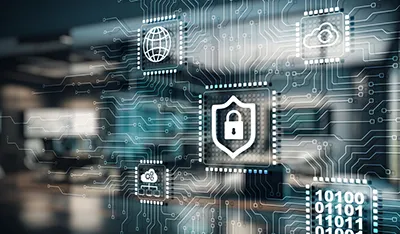Top Tips for Ensuring Secure Data Destruction in Your Cyber Security Plan
Top Tips for Ensuring Secure Data Destruction in Your Cyber Security Plan
Blog Article
The Significance of Effective Data Destruction Practices in Shielding Sensitive Info and Ensuring Computer Safety
In an era where data violations are progressively usual, the relevance of effective data damage techniques can not be overstated. Carrying out durable data destruction techniques not only mitigates these risks however also straightens with lawful compliance requirements, ensuring that companies copyright their track record and foster client trust fund.
Understanding Data Destruction
Understanding data damage is vital in today's digital landscape, where sensitive details can quickly be endangered. Effective information devastation entails not simply erasing documents but guaranteeing that data is irretrievable via extensive approaches. This procedure is crucial for organizations that handle personal client details, copyright, or interior documents, as any type of violation can lead to serious monetary and reputational effects.
Information devastation incorporates various techniques, including shredding physical media, degaussing magnetic storage tools, and utilizing software-based solutions that overwrite data multiple times. Each technique offers a certain objective and must align with the sensitivity of the details being taken care of. For instance, physical destruction is often liked for hard disks containing very private data, while software program techniques may be adequate for less delicate information.
In addition, sticking to industry requirements and laws, such as the General Information Defense Law (GDPR) or the Health And Wellness Insurance Policy Mobility and Accountability Act (HIPAA), is necessary for conformity and to alleviate lawful threats. Organizations has to establish a durable data destruction plan, train employees on best methods, and on a regular basis audit their treatments to guarantee that all sensitive info is taken care of securely and effectively.
Dangers of Inadequate Practices
Insufficient data damage techniques reveal organizations to significant dangers that can have far-reaching consequences. When sensitive information is not appropriately dealt with, it stays susceptible to unauthorized access, which can lead to data violations and identification theft. Such cases not only endanger the safety and security of people yet also tarnish the organization's reputation, resulting in a loss of client trust and possible financial repercussions.
Moreover, regulatory conformity is progressively stringent in lots of markets. Failure to stick to information devastation guidelines can cause substantial penalties and lawsuits against organizations. These charges can draw away and stress economic resources focus from core company operations.
On top of that, the abuse of residual information can bring about intellectual residential or commercial property theft or business reconnaissance, jeopardizing affordable advantages (data destruction). The impact of poor information destruction prolongs past immediate monetary losses; it can additionally cause long-lasting damage to brand name stability and market placement

Organizations need to identify that information safety is not exclusively concerning avoiding breaches; it additionally incorporates the liable management of information throughout its lifecycle. Neglecting efficient information damage protocols can have catastrophic effects, highlighting the requirement for robust measures to minimize these risks.
Ideal Practices for Data Devastation
Applying effective data destruction methods is essential for securing sensitive information and maintaining compliance with governing standards. Organizations needs to take on a multi-faceted strategy to make sure that information is irretrievable, consequently protecting against unapproved accessibility and possible breaches.
First, information need to be classified based upon level of sensitivity, permitting companies to use suitable damage techniques customized to the degree of risk. For digital information, using software-based data-wiping tools that abide by industry criteria can effectively overwrite existing data. Physical devastation techniques, such as shredding or degaussing, are essential for devices that store delicate details, making sure total elimination.
Developing a clear data retention plan is crucial, describing for how long different kinds of information must be preserved prior to devastation. Regular audits of information storage space systems are likewise essential to recognize unneeded or obsolete data requiring elimination.
Additionally, training employees on the Discover More importance of information damage and the particular protocols to comply with fosters a culture of safety and security within the organization. Finally, preserving paperwork of data destruction processes gives accountability and sustains compliance with external policies and interior plans. By sticking to these finest methods, companies can significantly reduce click the dangers related to data exposure.
Legal and Conformity Considerations

Failure to abide by these guidelines can lead to serious penalties, consisting of substantial penalties and reputational damages. Organizations must apply a durable information devastation policy that straightens with these legal frameworks and offers clear guidelines on the appropriate techniques of information disposal, whether physical shredding or digital cleaning.
Moreover, keeping documents of information damage activities is important for showing compliance throughout audits or inspections. By prioritizing legal and conformity considerations, companies can improve their information security position and foster trust fund with clients and stakeholders, ultimately contributing to a more protected information management atmosphere.
Benefits of Effective Data Damage
Reliable data devastation methods prolong beyond plain conformity; they use significant advantages to companies that prioritize them. By guaranteeing that delicate details is irretrievably destroyed, organizations alleviate the danger of information breaches and the possible economic effects connected with them. This aggressive technique not just safeguards versus unauthorized accessibility yet additionally improves the total credibility of the organization in the eyes of stakeholders and customers.
Implementing durable data devastation techniques, such as physical devastation of storage space devices or advanced data cleaning techniques, adds to the review strengthening of an organization's cybersecurity posture. data destruction. It minimizes the possibility of copyright burglary and safeguards exclusive info, consequently preserving an one-upmanship out there

Final Thought
To conclude, effective information damage techniques are essential for guarding sensitive info and boosting overall computer system safety. By carrying out thorough techniques such as shredding, software application, and degaussing overwriting, companies can minimize the dangers connected with unapproved accessibility and data breaches. Adherence to governing criteria, including GDPR and HIPAA, additional enhances compliance and shields against lawful repercussions. Eventually, a dedication to robust information devastation techniques fosters a society of responsibility, thus enhancing a company's cybersecurity posture and keeping client count on.

Report this page